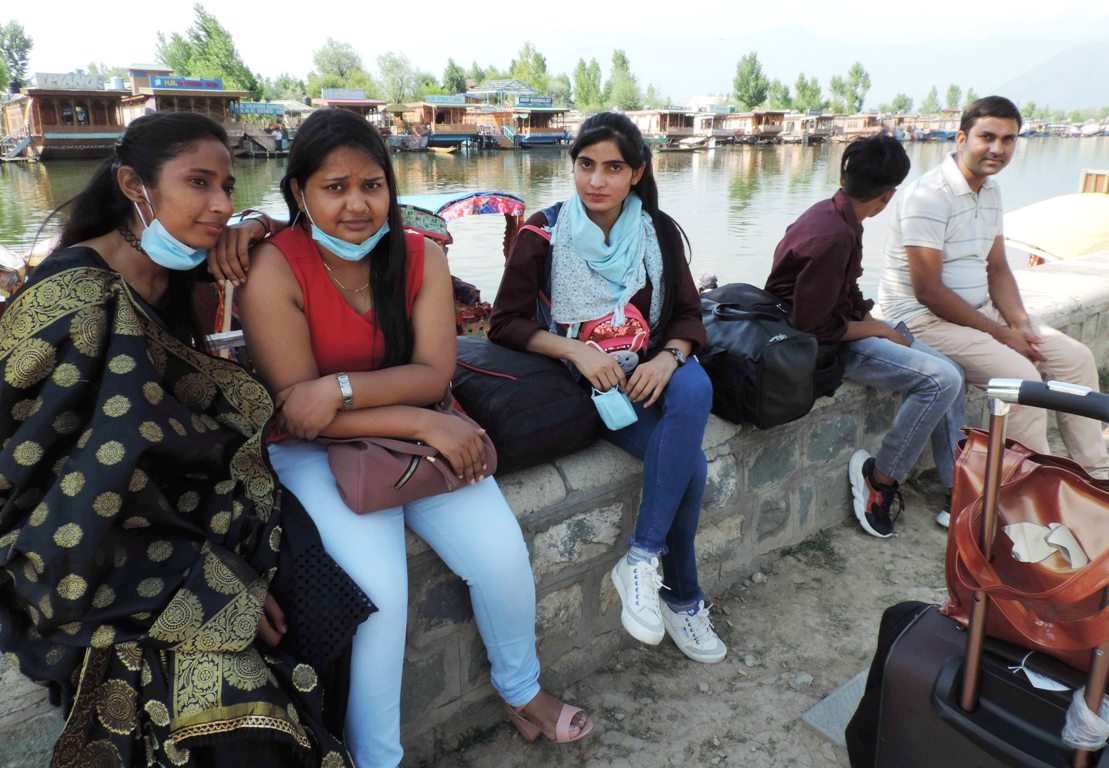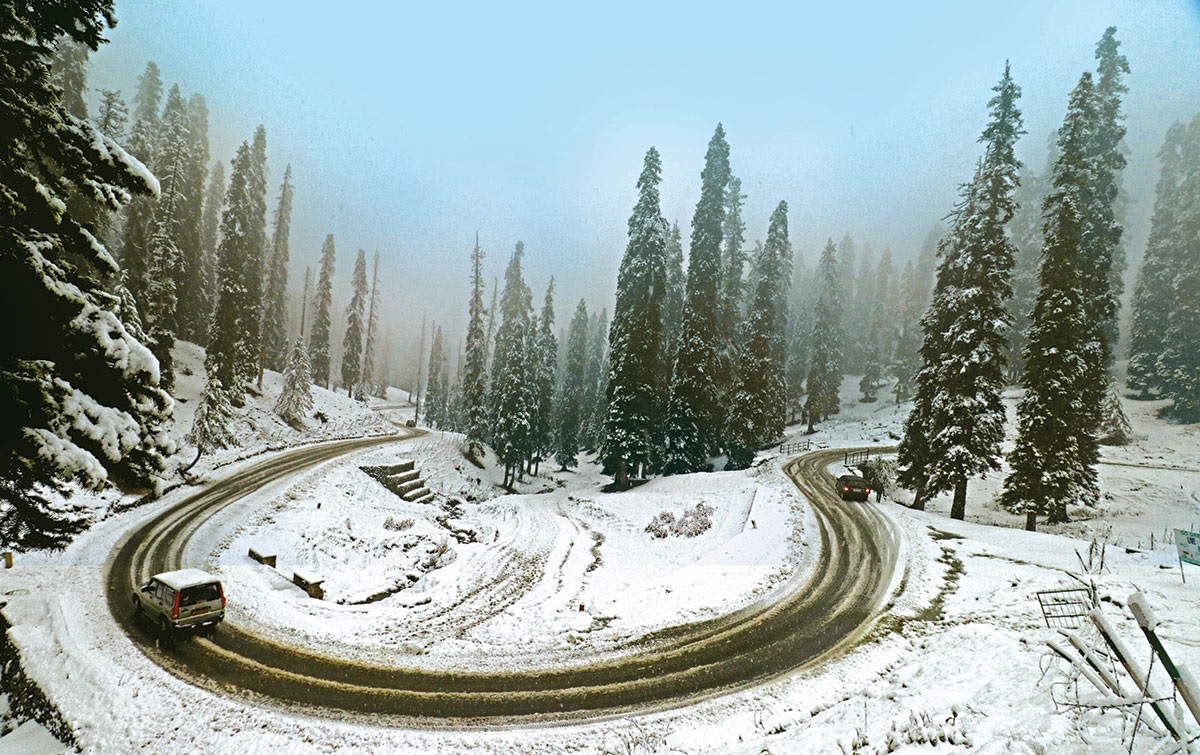The administration needs to handle the fresh tourist arrivals with caution, lest the benefit that accrues from the activity is undone by the surge in infections that could result from it, writes Riyaz Wani

With the second Covid-19 wave abating, Jammu and Kashmir administration and Kashmir’s tourism stakeholders are looking forward to a renewed inflow of tourists. There is hope for a bumper tourist season like the one from November 2020 to March 2021 that followed the end of the first wave. Thousands flew in monthly over these five months leading to the occupation of almost all hotel rooms in Gulmarg and Srinagar.
The data shared by the tourism department suggest that 1.13 lakh tourists arrived in Kashmir during the period, a figure that the then union tourism minister Prahlad Singh Patel told the parliament at the time had broken the record of the past 16 years. A part of the reason that the tourists visited Kashmir in large numbers was the ban on international travel due to the pandemic. Besides, the snow, a novelty for most Indians, and Kashmir’s reputation as “a paradise on earth.” drew visitors from across India.
Footfalls and Covid19
While the tourist arrivals gave a boost to Kashmir’s economy following two years of a slump due in large part to the prevailing political turmoil and the Covid-19 lockdown, people also blamed the advent of the second wave in the Valley to the unchecked footfalls. And this was true to a large extent. The alarming rise in Covid-19 infections through April and May was traced to mutated strains of the virus detected in states like Maharashtra. According to an official estimate then, the travellers and tourists who arrived in Jammu and Kashmir during the first three weeks of April accounted for 35 per cent of the total infections recorded in the region during the period.

Now, as the infections have started winding down in the recent past, the things on the tourism front once again look upbeat. Kashmir certainly needs an extended period of heightened tourism and business activity to make up for the lost time. And to this end, the tourism department needs to exert. The tourism amid pandemic needs to be handled with caution, lest the benefit that accrues from the activity is undone by the surge in infections that could result from it.
This must involve a two-pronged strategy: one, vaccination of the people associated with the tourism. Second, strict enforcement of the Standard Operating Procedure (SOP) to ensure the safety of the tourists during their stay in Kashmir. The administration has already carried out vaccination drives at tourist destinations. However, it would be sometime before the tourist arrivals get to the levels before the second wave.
A Battered Sector
Tourism in Kashmir has been battered by the turmoil of the last two years. But following the winter’s uptick, the fresh tourist arrivals petered out as the second wave reared its head and soon overwhelmed the country and Jammu and Kashmir. Since the latter part of March, there have hardly been any tourists, cutting the sector’s nascent recovery in its bud. This has once again led to the loss of livelihoods. The hardest hit have been the low wage workers like ponywalla’s, tourist guides, cab drivers, hotel staff, boatmen etc.
This prompted the administration to announce a Rs 3 crore relief package for people employed in the industry. According to the package, Rs 2,000 financial assistance was provided to the registered shikara owners, tourist guides, ponywalas, and others, including those who rent palanquins for yatris. The money was paid for the two months to tide over the peak of the ongoing wave.
As is obvious this money is peanuts and would hardly have compensated for the massive loss due to the absence of tourists. Would a possibly new season of tourism follow? It looks very likely as the Coronavirus cases decline. In fact, tourists have already started arriving and once again the continuing ban on international travel could work to the benefit of Kashmir.
The Security Situation
But then the tourism in Kashmir is not only about whether the pandemic is on or gone. The security situation is a factor too. While the Covid-19 lockdown may have been responsible for shutting Kashmir off over the last year, the situation was not better in the preceding year. Tourism to the then state plummeted in the wake of the Pulwama attack in February 2019. The following skirmishes between India and Pakistan forced the countries such as the US, the UK, and Australia to update their travel advisories for Kashmir. The harsh government measures including the highway ban didn’t help the matters. The tourist arrivals thus have reduced to a trickle.

At the best of times, the situation in Kashmir remains uneasy and uncertain. And sometimes a big local event could make the region a site of geopolitical tension just like the Pulwama attack did. Truth is that while tourism is a boon for Kashmir it needs a peaceful environment to thrive, something that the Valley has lacked for the past more than thirty years. And considering the ongoing state of affairs, fundamentally the situation remains the same.
So, while we look forward to a fresh season of tourism, it is important that the state of siege that has more or less prevailed since the repeal of Article 370 in August 2019 is lifted. And this siege is not about the lockdown or the denial of the internet and phones but about the political uncertainty and unpredictability.
Official Response
A senior officer in the tourism department said they are aware of the risk that the virus can unleash if the tourism sector is not managed properly. He said they have vaccinated almost 85 per cent of the professionals involved with the hospitality sector. Asserting that all arrivals are compulsorily subjected to a rapid test for Coronavirus, the officer said they are aware of the crisis if the arrivals are left unchecked.
“In comparison to May, June had impressive arrivals,” the officer said. “July trend is hugely encouraging and it now depends on how the pandemic behaves in the coming days.”
Apart from the tourist arrivals, there has been a sort of surge in the permissions that producers and directors require to shoot in Kashmir. This, he said, is an encouraging trend.
The department is planning a festival in Gurez this summer. At the same time, the officer said they are making preparations in advance for winter tourism by improving certain facilities and investing in the equipment required by the winter visitor.















